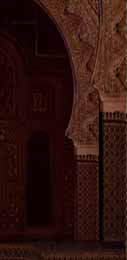|
|
|
 |
 |
|||||||
Chapter 12 : CHALLENGES TO THE IMAMATE After the death of the fourth Imam, Zayn al-'Abidin in 94 AH / 712 CE, the Imamate passed on to his son Muhammad al-Baqir who was four years old at Karbala where the massacre of the Prophet's household (pbthem) took place. Muhammad al-Baqir had been taken with his ill father, Zayn al-'Abidin and the other captives to Kufa and then to Damascus to Caliph Yazid who detained them for a year. Al-Baqir's mother being Fatima, the daughter of Hasan b. Abi Talib, meant that Imam Muhammad Al-Baqir was a descendant of the Prophet (pbh) and of Ali on both sides. The Imam also had a half-brother Zayd, whose mother was from Sind. Like the Imams before him, al-Baqir, The Expander of Knowledge, adopted a policy of quiescence due to the oppressive attitude of the ruling Caliphs. Zayd however, rose against those in authority to claim the heritage of Prophet Muhammad (pbh) for his half-brother. Consequently, the pious Zayd was martyred during the reign of the Umayyad Caliph Hisham Abdul-Malik. Later on, after the demise of Imam Muhammad Baqir, some groups considered Zayd to have actually been the Imam because they claimed that it was necessary to fight at every instant to have the Imamate recognized. Yet this belief in the necessity of confrontation itself would mean that Zayd's pacifist father, Zayn al-'Abidin was not an Imam. The followers of Zayd page 42 |
 |
|||||||
|
were known as Zaydites and were said to have included men of influence in Kufa. Some historians say that the Zaydites also attracted a considerable number of those who had previously taken Ibn al-Hanafiya and then, Ibn al-Hanafiya’s son Abu-Hashim ‘Abd Allah as the Imam. Some historians add that, on the issue of the first two Caliphs, Abu Bakr and Umar, the early Zaydites at least, held that they had been legally elected Imams, although they acknowledged that Ali b.Abi Talib had been the preferable candidate. This meant that they accepted the rulings of Caliph Umar. Consequently, the Zaydites attracted the support of the Mu’tazilites, a Sunni sect and the sympathy of the traditionalist circles of Medina and Kufa which was advantageous for their political ambitions. Al-Baqir himself similarly did not discredit Abu Bakr and Umar and recognized them as Caliphs but adhered only to traditions derived from Ali and his supporters, and established the beginnings of the Madhhab or legal school of the Ahl al-Bayt, the Household of the Prophet (pbh). One of the Hadiths or tradition that was circulating by then was on the authority of one ‘Abd Allah b. Mas’ud in which the Prophet (pbh) is reported to have said : The foretold man from the Prophet's household (pbt), who will bring peace and equity, is the Mahdi, in whom both the Sunni and Shi'is believe. Imam Al-Baqir, by the strength of his theological propositions, in the long run emerged as the recognized leader of the future majority group of the Shi'a. His pupils compiled books on page 43 |
 |
|||||||||||||||||||||||
|
After 19 years as the Imam, Muhammad al-Baqir died at 57 due to poisoning administered by Ibrahim b.al-Walid b.'Abd Allah, the nephew of the Ummayad Caliph Hisham, on the 7 Dhi'l-Hijjah 114 AH / 732 CE and was buried at Janatu'l-Baqi in Medina. page 44 |
 |
||||